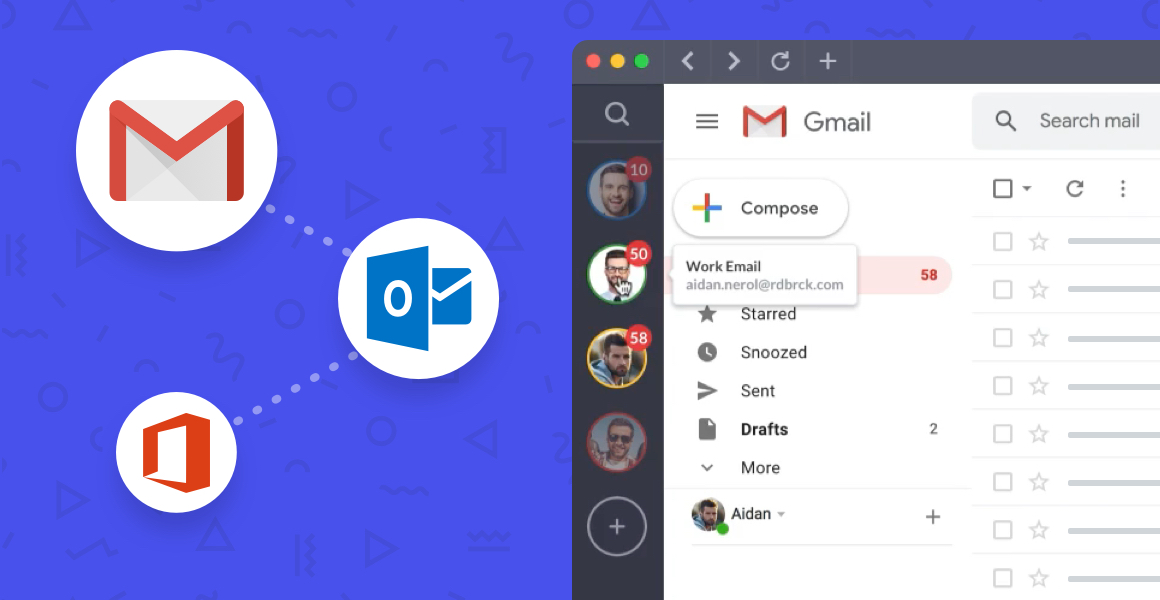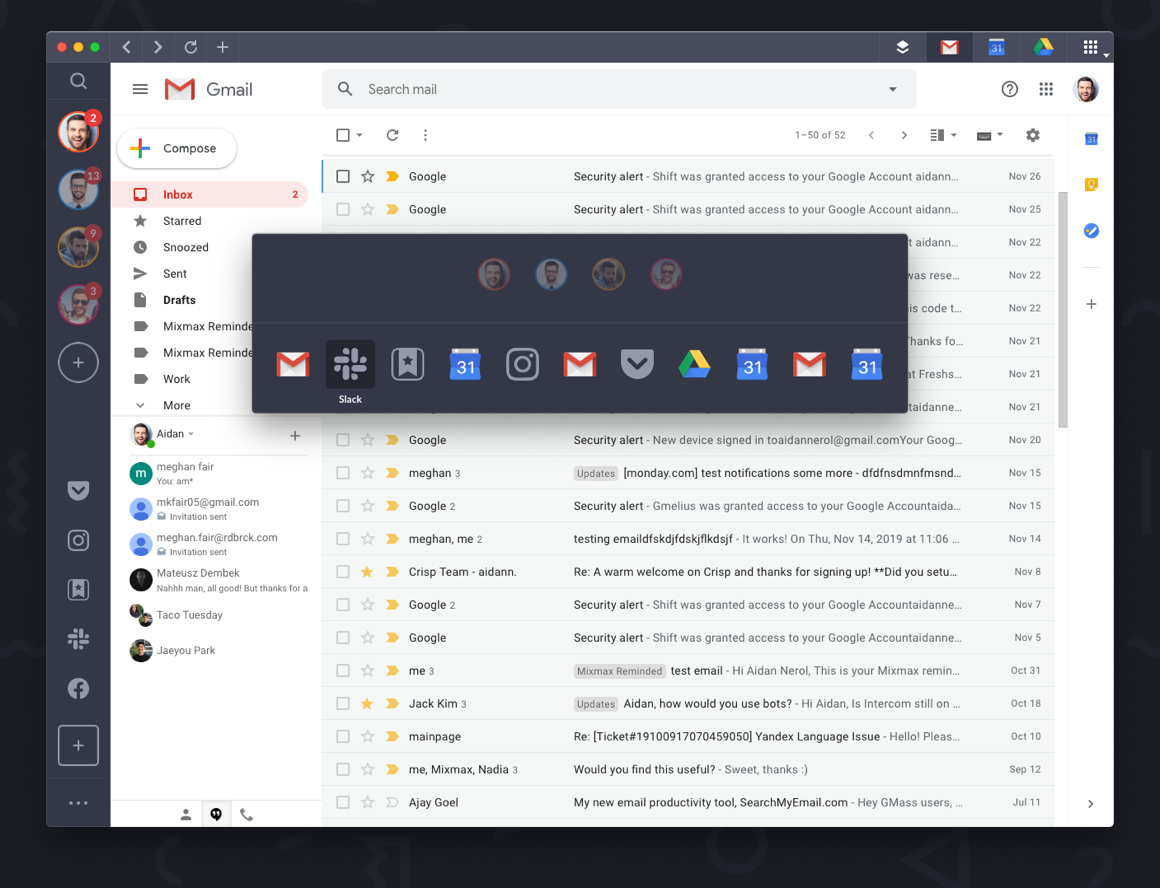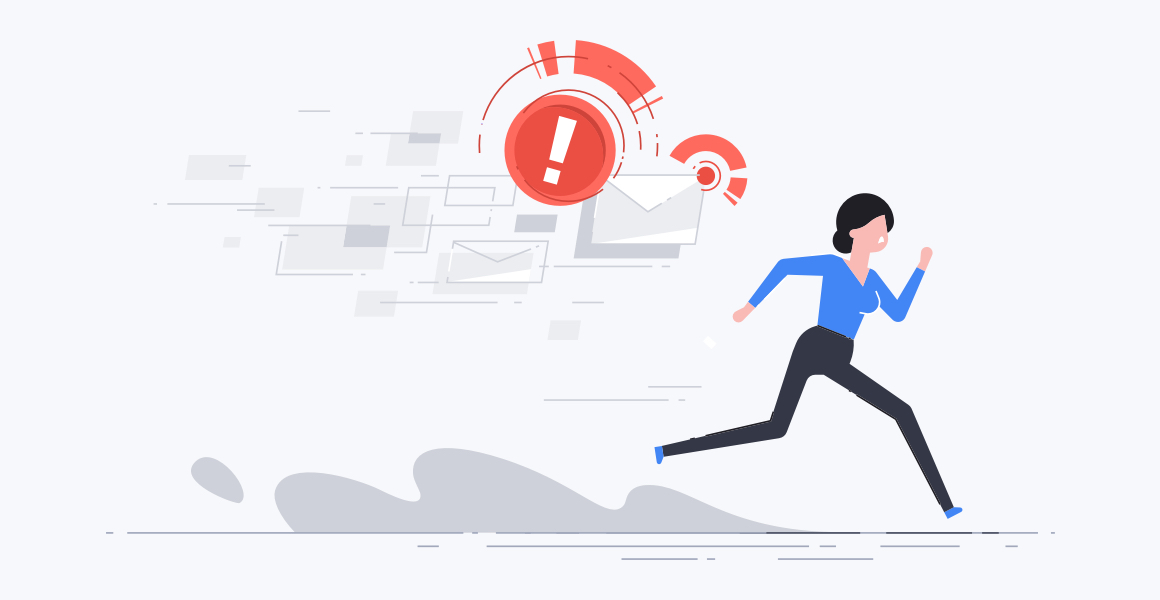Everyone gets overwhelmed by their inbox from time to time, and learning to manage the seemingly endless string of emails can be a daunting task. Sometimes just deciding which email to prioritize first can drain more mental energy than responding to the email itself. There is no shortage of complaints about email overwhelm. Perhaps you will recognize some common irritants: I receive thousands of emails a day. My inbox is so cluttered that I miss things. I'm tired of spending countless hours sorting emails. Anyone with an email account can relate to this feeling of helplessness. The first step to managing your inbox is finding a strategy for reducing the amount of stress that email poses on your day. It's time to take control of your inbox and kickstart productivity.
The Problem With Email Overload: Recognize it's not really about email
Unfortunately, it's not entirely the fault of email itself — email can be a super useful tool for communication when used efficiently. The issue is a much greater one: failing to set boundaries for how and when email is used will ultimately lead you to an overloaded inbox. Every time you see a notification pop up on the side of your screen, you let go of your focus and leave more critical tasks for email. Just like that, email turns from an essential communication tool into a distraction.
In organizations with blurred lines on how to communicate, your inbox becomes a dumping ground for every meeting, task, project, thought, or idea. There's nothing worse than a cluttered inbox that needs to be manually sorted by importance because, in most cases, emails get buried, and everything becomes unimportant. Now you're stuck sorting through your inbox to find important information, and there's no system in place to help you prioritize your time. This is a vicious cycle, and before you know it, your email is so overwhelming that your response time drops, you're missing out on important projects, and stress levels are rising.
Whether it's a corporate issue or a personal problem — there are steps you can take to cope with email overflow and hopefully find a strategy that works for you.
The Benefits Of Controlling Your Email Flow
Regularly checking your inbox throughout the day will kill your productivity, so you must find a way to regulate the flow of emails you receive. Unsubscribe from regular newsletters, turn off email notifications on all your apps, and set clear guidelines for your co-workers on when and when not to use email. If your email is being flooded by too many "FYI's," let your co-workers know that you only need to be looped in on final decisions or when action is required. Setting these boundaries will allow you to control the number of emails you receive and lay out email usage rules.
Streamline Your Email Accounts
If you have multiple email accounts, the best way to manage your inbox and kickstart productivity is to aggregate your accounts in Shift. Shift is a productivity app that allows you to aggregate all of your email accounts in one place. You can transfer all of your messaging apps, email, and social media accounts all in one beautiful platform. Toggle through your different accounts, and don't miss a beat. Shift has also introduced a mute notifications feature that allows you to take a break from the constant stream of notifications and focus on deep work.
Gmail, Outlook, and Office 365 accounts hosted by Microsoft are all primary email accounts supported in Shift. Log into your primary email account, and then you can add as many accounts and apps as you wish. We have put together a couple of guides to help lead you through the process of adding email accounts and IMAP accounts, so you can get right into working productively. We currently have 1500+ apps integrated into the Shift directory, so you can easily combine all of your workflows into one place.

10 Tips to Reduce Email Clutter
1. Declutter your inbox
Leave the unimportant details out of your inbox and press "delete" when you feel it is necessary. Why are you holding onto emails you received three years ago? Let them go! Cleaning out your inbox is the first step in managing an overwhelming account. Delete anything that doesn't need to be read or kept: calendar invites, promotional emails, quick responses, etc. Respond to any emails that require an immediate response before you forget, and it gets buried even further. You should be able to clean out at least 80% of your emails, and you can put the leftovers in a separate folder to signal they are a high priority.
2. Focus your intentions by simplifying your emails
Keep your responses short and sweet, provide good detail but avoid spending too long cultivating an email that the recipient may not understand. Chances are, the longer the email, the harder it will be to follow. Use bullet points to get your point across in a simple, easy-to-read format.
3. Find an efficient alternative to email
Email should not be the only line of communication between co-workers. Any project or decision that requires back and forth discussion should be left out of your email threads. Use a communication tool such as Slack, Messenger, Discord, Flock, or Whatsapp to collaborate on big projects with your team and stay up to date on tasks without overwhelming your inbox.
4. Remember, not every email needs a follow-up
You don't need to respond to every email you receive. You might recognize some of these useless follow-up emails: Thank you! Great, talk soon. Just saw this; I'll get back to you shortly. It's great that you want to be polite and friendly, but following up on every email will only clog up your inbox and theirs. If there's no immediate action to be taken or questions that need to be answered, you probably don't need to respond.
5. Use an inbox management system
There's nothing wrong with needing a little assistance with your inbox, and it will likely make you more productive. The more time AI bots spend on your email, the less time you spend sorting through the accumulated junk pile. Sanebox and Unroll.Me are excellent management tools that filter out unimportant emails so you can be more productive and alleviate stress from your inbox.
6. Develop a system and stick to it
Find a process for managing your email flow that works for you. Whether that be purging your email accounts, creating folders that help you sort out priorities, or relying on an automated management system — developing a process that effectively manages your inbox is crucial. Regularly cleaning out your inbox is a good place to start, and then you can decide how to sort between high and low priority emails.
7. Set your boundaries
Tell people exactly how you want them to communicate with you. Don't be afraid to let them know, "I only use email to send important documents or follow up with my partnerships. If you need to talk to me about a project, message me on Slack, and we can chat further." It's essential to set your boundaries and discuss your team's time and place for email.
8. Schedule in time to check your inbox
If you find yourself dropping what you're doing to check your email, consider setting up a specific time block for looking through your inbox. This way, you will be able to silence the temptation of checking new emails and avoid letting them distract your workflow. Review your inbox when you get to work, and then schedule in a couple of times throughout the day where you can look over your notifications.
9. Mute notifications at certain times in the day
The constant "ding" of email notifications will immediately take you out of the zone and disturb your workflow. No one expects you to respond immediately, and if it's really that urgent, they will likely call you — so don't be afraid to press the mute button on your notifications. Mark off blocks of time in your calendar to let people know they won't be able to reach you during those periods and avoid notification overload.
10. Don't rely on email for workflows
There are so many better ways to organize big projects than a strenuous email thread, so stop crowding your inbox with little details! Project management tools like Asana, Jira, or Airtable will help you and your team reach your goals much more efficiently. Organize issues, assign tasks, and plan projects outside of email, and you will see productivity soar.
Manage Your Email Better With Shift
If you're tired of searching for solutions to your overcrowded inbox, look no further. Shift puts all of your email accounts together in one secure dashboard. There's no better way to stay organized and balance your workload than streamlining all of your accounts using Shift. Toggle through different apps in the same browser without logging in and out, saving you precious work time. If you want to learn more about the features Shift has to offer, check out our latest video tour.
















 Share on Facebook
Share on Facebook Share on Twitter
Share on Twitter







